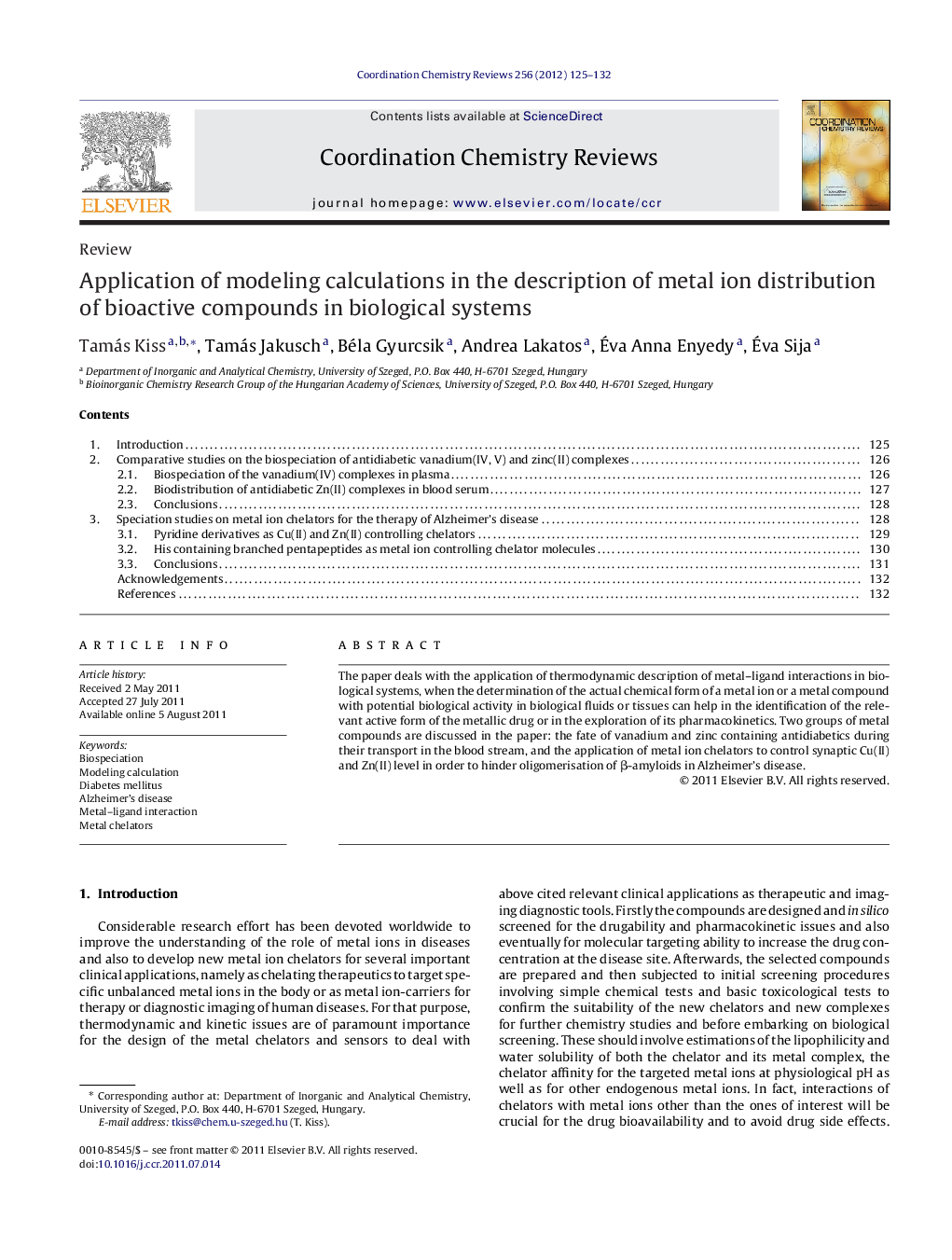| کد مقاله | کد نشریه | سال انتشار | مقاله انگلیسی | نسخه تمام متن |
|---|---|---|---|---|
| 1299136 | 1498775 | 2012 | 8 صفحه PDF | دانلود رایگان |

The paper deals with the application of thermodynamic description of metal–ligand interactions in biological systems, when the determination of the actual chemical form of a metal ion or a metal compound with potential biological activity in biological fluids or tissues can help in the identification of the relevant active form of the metallic drug or in the exploration of its pharmacokinetics. Two groups of metal compounds are discussed in the paper: the fate of vanadium and zinc containing antidiabetics during their transport in the blood stream, and the application of metal ion chelators to control synaptic Cu(II) and Zn(II) level in order to hinder oligomerisation of β-amyloids in Alzheimer's disease.
Thermodynamic measurements and modeling calculations were used to monitor the fate of biologically potentially active metal complexes in biological fluids to assess their actual solution forms in biological milieu. As an illustration the bar diagram shows the distribution of several antidiabetic Zn(II) complexes among the blood serum components.Figure optionsDownload high-quality image (173 K)Download as PowerPoint slide
Journal: Coordination Chemistry Reviews - Volume 256, Issues 1–2, January 2012, Pages 125–132